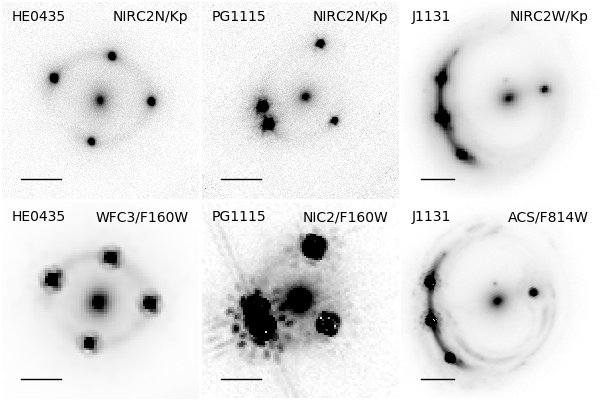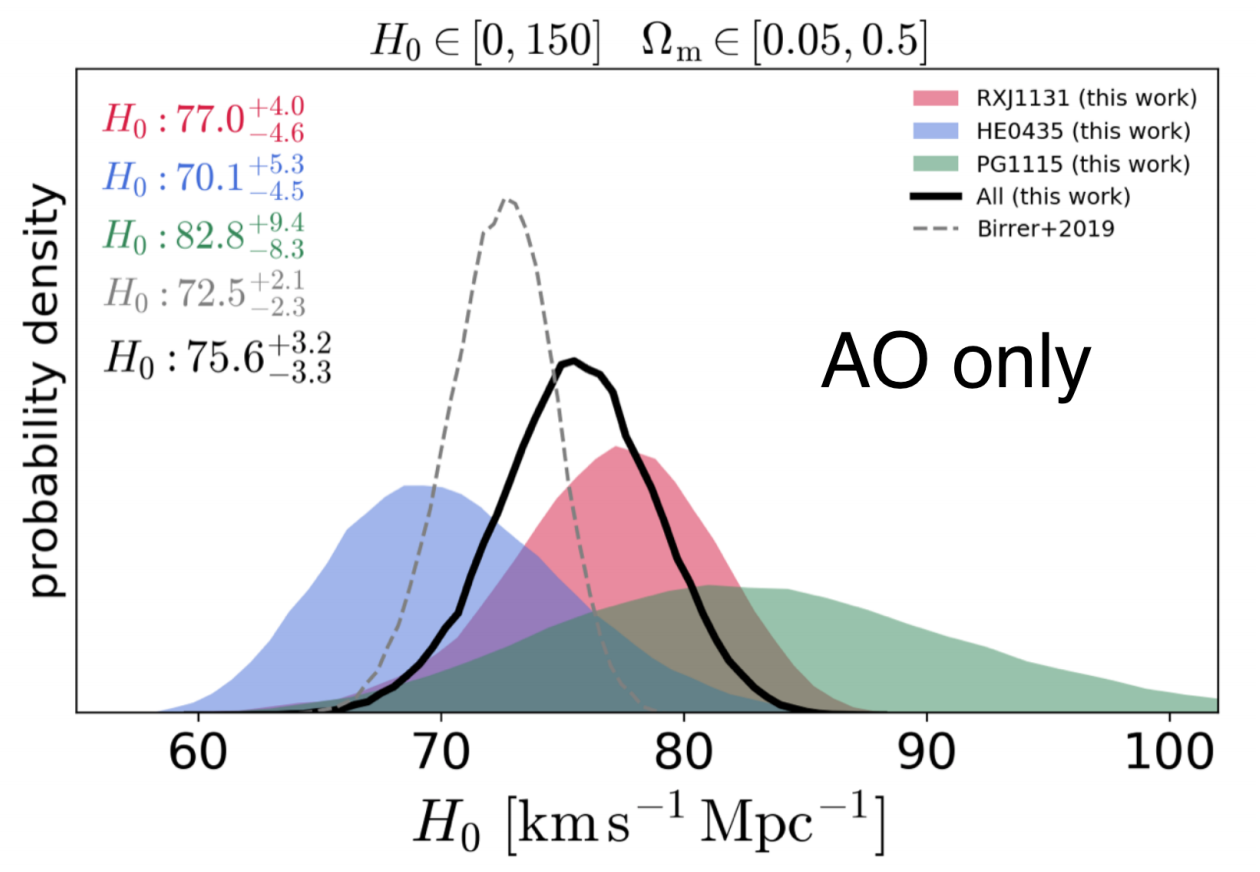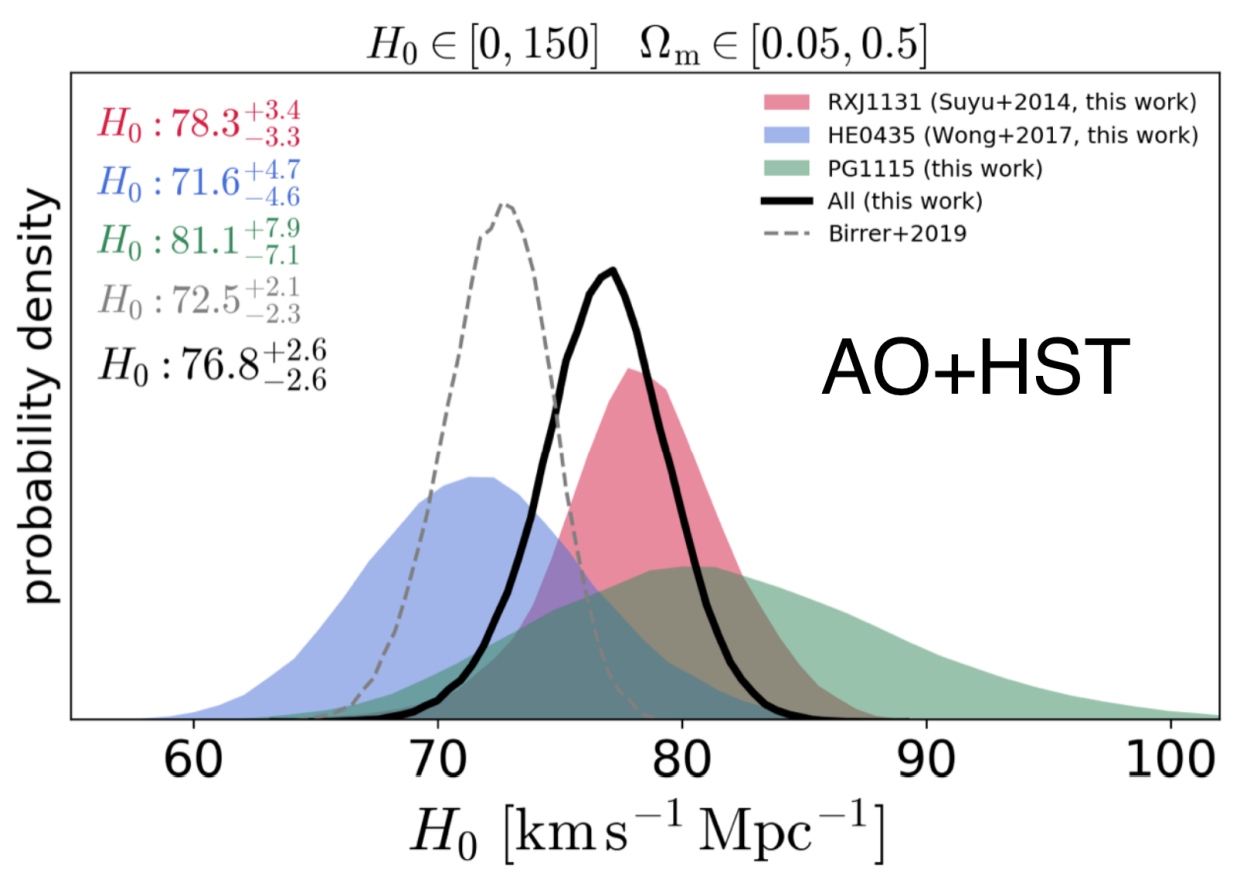A SHARP view of H0LiCOW: H0 from three time-delay gravitational lens systems with adaptive optics imaging

We present the measurement of the Hubble Constant, H0, from three strong gravitational lens systems with
adaptive optics (AO) imaging. We describe a blind analysis of both PG1115+080 and HE0435-1223 as well as
an extension of our previous analysis of RXJ1131-1231. For each lens, we combine new AO imaging from the
Keck Telescope, obtained as part of the AO effort from Strong lensing high-resolution programe (SHARP), with Hubble Space Telescope (HST)
imaging, velocity dispersion measurements, and a description of the line-of-sight mass distribution to
build an accurate and precise lens mass model. This mass model is then combined with the COSMOGRAIL
measured time delays in these systems to determine H0.
After unblinding, the joint AO-only result for the three lenses is H0 = 75.6+3.2
−3.3 km/s/Mpc. The joint result of the AO+HST analysis for the three lenses is H0=76.8+2.6−2.6
km/s/Mpc. All of the above results assume a flat Λ cold dark matter cosmology with a uniform prior on Ωm
in [0.05, 0.5] and H0 in [0, 150] km/s/Mpc.
In this work, we find that the high S/N AO and HST imaging data yield consistent results, providing and
important validation of the AO PSF reconstruction techniques ( Chen et al. 2016; SHARP III )
for high precision lensing work.

